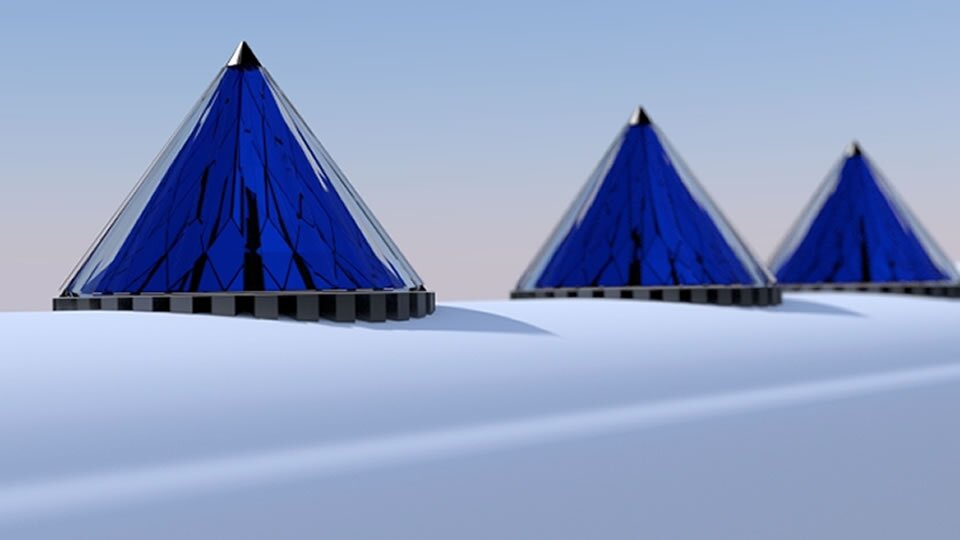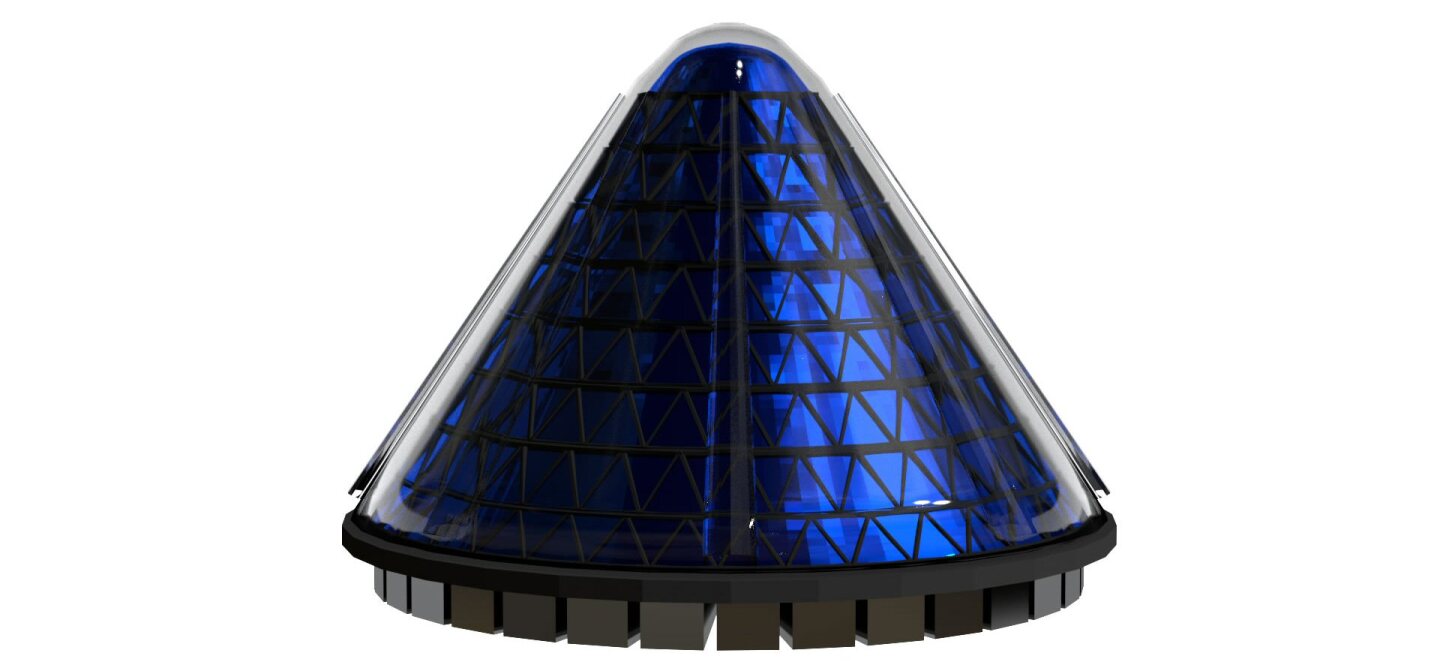For the vast majority of those looking to harvest energy from the sun to satisfy domestic or business electricity needs, the photovoltaic world is a static and flat one. Even many large scale solar farms feature row upon row of rigid panels, although there may at least be some movement as the panels follow the path of the sun as it moves across the sky. V3Solar's Spin Cell is a little different. It's claimed to be capable of generating over 20 times more electricity than a flat panel with the same area of PV cells thanks to a combination of concentrating lenses, dynamic spin, conical shape, and advanced electronics.
The V3 Spin Cell actually features two cones, one made up of hundreds of triangular PV cells and a static hermetically-sealed outer lens concentrator comprising a series of interlocking rings and a number of tubular lenses spaced equally around the outside surface. According to V3Solar (previously Solarphasec), the Spin Cell's cone has been set at an angle of 56 percent to enable capture of the sun's light at more angles than flat PV panels, which negates the need for separate tracking systems and also accommodates the different angles of the sun throughout the year.

The lenses concentrate light on the PV cells beneath and by spinning the inner cone, the excessive heat problems often associated with static systems that use lenses or mirrors to focus the light in one area are avoided. The PV layer is continuously cycled in and out of the concentrated light, creating a dynamic shutter and flash rate strobe effect that excites the electrons in what's described as a perfectly timed dance of light.
"Imagine holding your hand steady beneath a magnifying glass," says V3Solar. "The heat would build up to a point of discomfort, even pain. Now imagine moving your hand back and forth below the magnifying glass. You still receive the same light, but very little heat."
"The spin is powered by a small amount of electricity that comes from the sun," V3Solar's Chief Marketing Officer Robert Styler told Gizmag. "It only requires one amp because the unit floats on magnets, there is almost no resistance, and the magnets are arranged to push the spin forward. The rate of spin is controlled by electronic feedback loops to maximize production."
"The panels produce DC, which runs to the magnets in the base ring. As these spin past the magnets in the stator ring, AC is produced ... just like a standard generator. It is then conditioned through the power electronics to be grid ready. We can also produce DC with the flick of a switch if that is required."

The company has just announced that a Spin Cell prototype recently underwent third party testing where it was verified as being capable of generating over 20 times more electricity than a static flat panel with the same area of photovoltaic cells. The test involved wirelessly connecting the module to data loggers which recorded information on such things as heat, revolution speed, and output.
It was also found that the layer of PV cells never exceeded 95 degrees Fahrenheit (35°C), and determined that the module would perform indefinitely at 20 times concentration. More tests are scheduled to analyze performance at 40, 50 and 75 times light concentration levels.
V3Solar has recently joined forces with Nectar Design to complete the engineering and commercial design of its one meter high and one meter wide Spin Cell module, and has just secured its first licensing agreement to supply 800,000 Spin Cell units for a large solar farm.
Source: V3 Solar
V3Solar has produced the following video explaining its Spin Cell technology:








